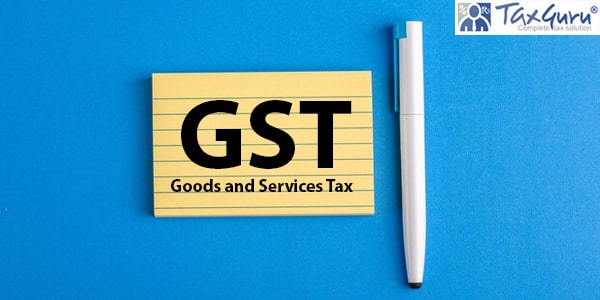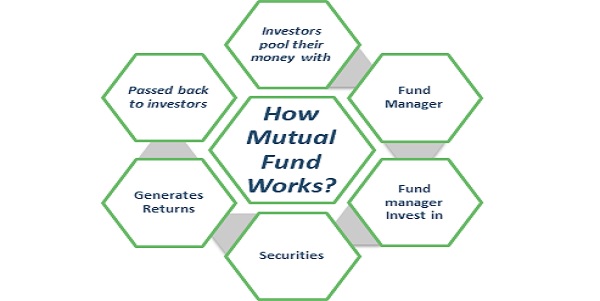An assessee is required to file an income tax return under Section 139 or in response to notice under section 142, consisting all the details of income earned during the previous year. Once the return is filed the next step of Income tax department is to examine the return for its correctness. This examination is known as ‘Assessment’.
Under Income Tax Act, 1961 there is section 143 under which assessment is done:
1. Assessment under section 143(1), Summary assessment without presence of assessee.
2. Assessment under section 143(3), Scrutiny assessment.
Page Contents
Section 143(1) – Summary assessment
Introduction:
This is the preliminary assessment without calling the assessee i.e. Tax payer.
Scope of assessment under section 143(1):
Under this assessment the general scrutiny is carried to discover the basic errors. Some adjustments (if necessary) are done to compute the correct income tax. The following are the adjustment, if required, namely:
1. Any arithmetical error in the return, or
2. An incorrect claim, which is apparent from the income tax return.
3. The loss claimed or the loss carried forward of any previous previous year in return shall be disallowed if return is filed after the date specified in Section 139(1).
4. The expenditure shown in the audit report but not claimed while preparing income tax return shall be disallowed.
5. Various deductions claimed under Section 80 shall be disallowed if such return is furnished after due date specified in Section 139(1).
6. If any income found in Form 26AS or Form 16 or Form 16A but details not furnished while computing the total income shall be added.
For the above purpose “an incorrect claim apparent from any information in the return” means a claim on the basis of an entry in the return:
1. Of an item which is inconsistent with another entry of the same or some other item in such return. Example: Suppose in ITR 4 the other head income (like income from other sources, capital gain etc) are deducted from calculation of PGBP but the same are not added back in calculation of respective head of
2. In respect of which the information is required to be furnished under the Act to substantiate such entry and has not been so furnished:
Example: While calculating the capital gain the type of asset or security sold must be described such as Gold, Shares, Mutual Fund, Residential property, etc. Also the acquisition year and date of sale are to be furnished in the return. So any mismatch found may be discovered.
3. In respect of statutory limit which may have been expressed as monetary amount or percentage or ratio or fraction
Example: The limit of section 80C is Rs 1,50,000. But assessee claimed the aggregate deduction of Rs 1,75,000. So the AO has to increase the Gross Total Income by excess amount i.e. Rs 25,000.
Process of Assessment under Section 143(1):
1. After the adjustments carried out, the comparative statement is formed showing the calculation of assesseee and calculation of the AO.
2. The Adjustments are not incorporated in the return unless intimation is given to the assesseee in writing or electronic mode.
3. The response received from the assesseee shall be considered before incorporating the adjustments in the income tax return, if the response is not received in 30 Days from the issuance date the adjustments should be incorporated.
4. Recomputation of the income shall be done by the AO and after making above given adjustments. The tax liability and Interest on it shall be computed.
5. After computing the tax liability the same amount should be adjusted against advance tax, any tax deducted at source, any tax collected at source, any relief allowable under an agreement under section 90,90A or any relief allowable under section 91, any rebate allowable under Part A of Chapter VIII, any tax paid on self-assessment and any amount paid otherwise by way of tax or interest
6. Intimation shall be prepared and sent to the assesseee specifying the sum determined to be payable by or the amount of refund due to the assesseee.
7. The amount of refund due to the assesseee shall be granted to the assesseee.
8. Intimation is also to be sent if the loss is adjusted but there is no change in the income tax liability and The acknowledgement can be considered as intimation if no tax payable or refund, and there are no adjustments required.
9. The issuance of intimation under section 143(1) is not necessary if AO has issued notice under section 143(2)
Time Limit for Sec 143(1):
Assessment under section 143(1) can be made within a period of one year from the end of the financial year in which the return of income is filed.
Example: If return was filed for FY 2018-19 on date 31/09/2019 then no intimation shall be sent after 31.03.2021.
Section 143(2) – Notice for Scrutiny assessment
Introduction:
To ensure that the income furnished is not understated or any excessive loss is claimed or has not underpaid the tax. The AO may call the assesseee by serving a notice to remain present by himself of by representative and submit the evidences and documents to prove the genuinity of the income tax return. In this case the AO can send the notice only if the assesseee has filed the Income tax Return
Time limit:
After 6 months of completion of relevant assessment year in which return is filed no notice shall be served to the assesseee for this particular section. i.e. 18 Months from the end of relevant previous year.
Section 143(3) – Scrutiny Assessment
Introduction:
The detailed checking of the income tax return furnished by the assesseee is done at this stage by the assessing officer. Here the AO verifies the genuineness and correctness of the deductions, claims etc done by the assessee.
Scope of assessment under Section 143(3):
Under scrutiny assessment the AO verifies the evidences, documents, books of accounts etc. to confirm that the assesseee has not understated the income or shown excessive loss or underpaid the tax. The scrutiny will also be done of the claims and deductions incorporated in the income tax return.
No order making an assessment of the total income or loss should be done of following person:
1. Research association referred to in clause (21) of section 10;
2. News agency referred to in clause (22B) of section 10;
3. Association or institution referred to in clause (23A) of section 10;
4. Institution referred to in clause (23B) of section 10;
5. Fund or institution referred to in sub-clause (iv) or trust or institution referred to in sub-clause (v) or any university or other educational institution referred to in sub-clause (vi) or any hospital or other medical institution referred to in sub-clause (via) of clause (23C) of section 10,
Unless,
1. The AO has intimated the Central Government or the prescribed authority about the contravention of relevant section, where in his view contravention has taken place.
2. The approval granted to referred parties has been ended.
Process of Assessment under section 143(3):
1. If AO deems fit, then a notice may be served to assesseee to remain present in the office and produce the evidence related to the income tax return.
2. To carry out the assessment under section 143(3), the AO need to issue notice as per provisions of Section 143(2).
3. The assesseee or his representative can remain present in the office of the AO for placing supporting evidences arguments etc.
4. After gathering all the evidences obtained from the assesseee or the representative of the assesseee and considering its correctness on the related points, the AO shall make an assessment of the total income or loss of the taxpayer and determine the sum payable by him or refund of any amount due to him on the basis of such assessment.
Time limit for Sec 143(3):
As per section 153, assessment under section 143(3) shall be made within a period of twenty-one months from the end of the assessment year in which the income was first assessable.
Example: If income tax return is filed of FY 2018-19 is filed on 30/09/2019, then assessment shall be made within 21 Months from the end of relevant AY i.e. last date of completion of the assessment will be 31/12/2021.
Section 143(4) Introduction:
This section relates to the tax paid or refund received after such assessment process is done under Section 143(3) or Section 144.
Process:
‘1. Any tax or interest, paid at the time of receipt of intimation under Section 143(1) shall be deemed to be paid under such assessment i.e. Section 143(3) or 144.
‘2. If after such regular assessment it is discovered, that excess refund was issued under section 143(1) as compared to assessment done under Section 143(3), then the excess amount so received shall be considered as tax payable by the assessee.
Example: If Refund of Rs. 1,00,000 was issued at the time of assessment under section 143(1), but during the assessment under 143(3), it was discovered that refund to be issued was of only Rs 75,000. So Rs. 25,000 will be deemed to be tax payable by the assessee.
Disclaimer: The contents of this article are for information purposes only and does not constitute advice or a legal opinion and are personal views of the author. It is based upon relevant law and/or facts available at that point of time and prepared with due accuracy & reliability. Readers are requested to check and refer to relevant provisions of statute, latest judicial pronouncements, circulars, clarifications etc before acting on the basis of the above write up. The possibility of other views on the subject matter cannot be ruled out. By the use of the said information, you agree that Author / TaxGuru is not responsible or liable in any manner for the authenticity, accuracy, completeness, errors or any kind of omissions in this piece of information for any action taken thereof. This is not any kind of advertisement or solicitation of work by a professional.
(Republished with Amendments by Team Taxguru)





















Thank you